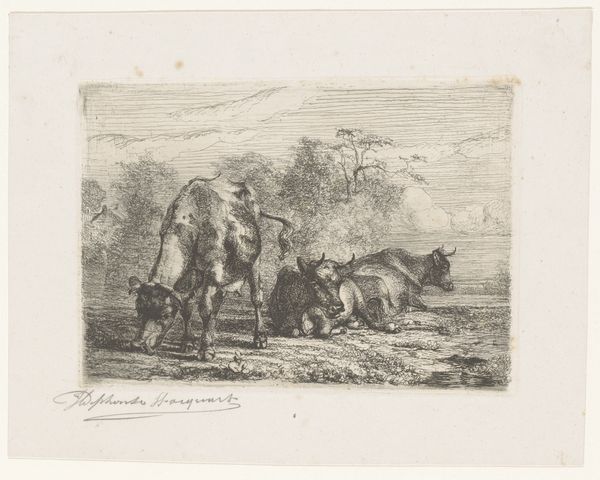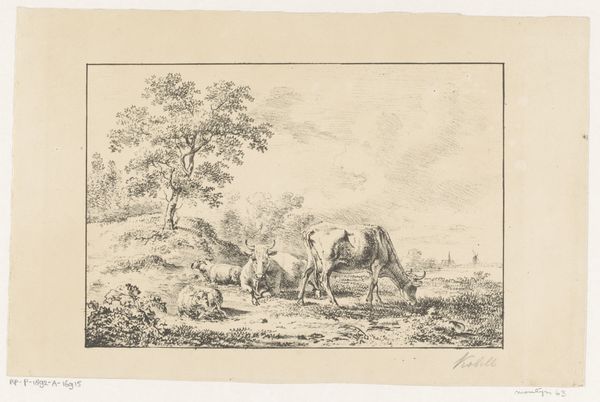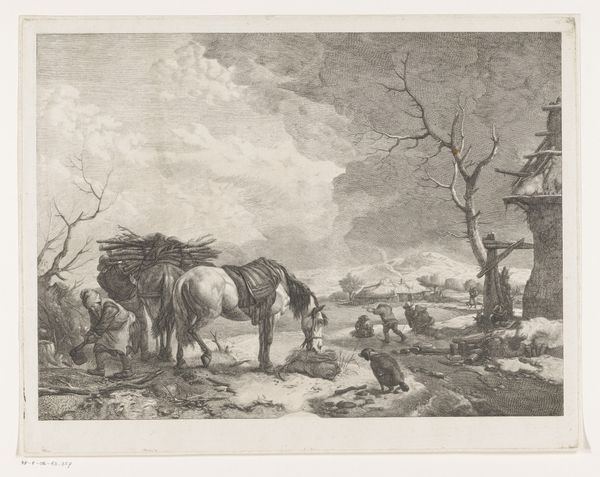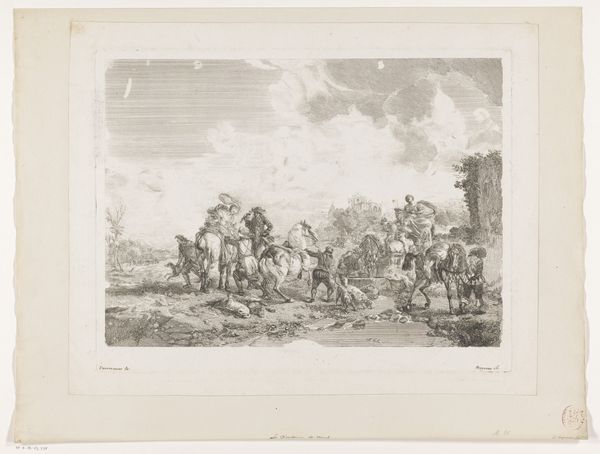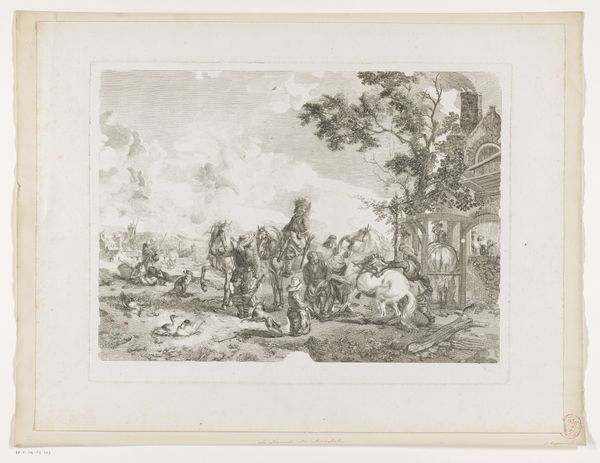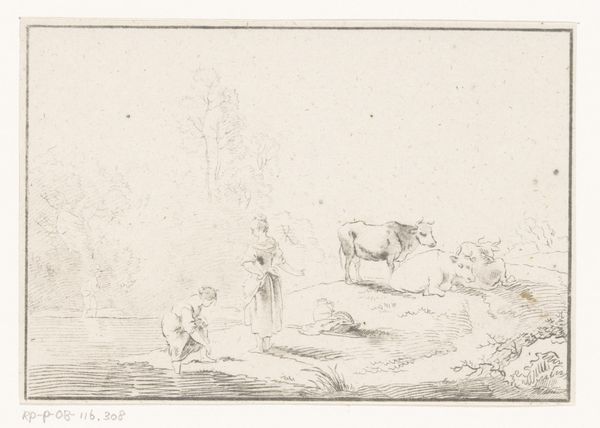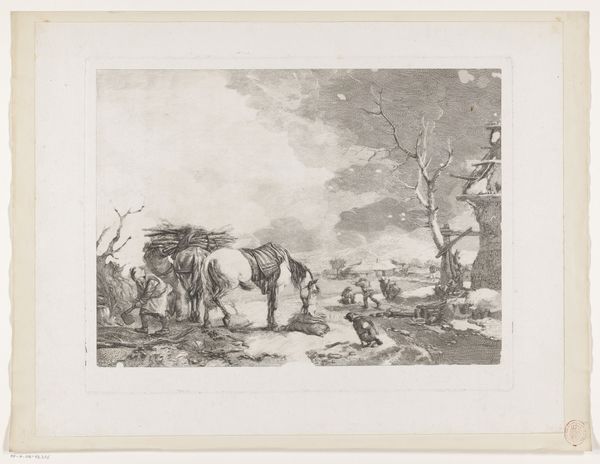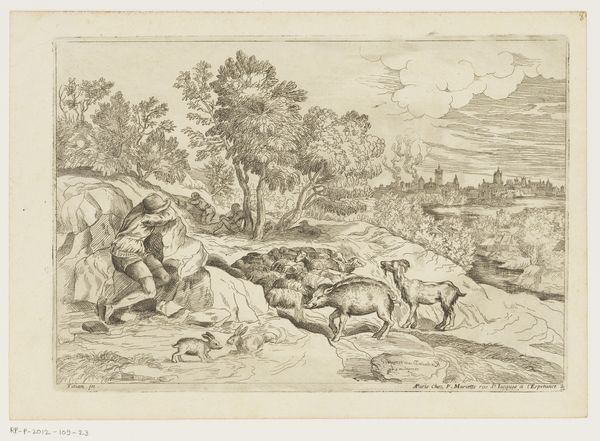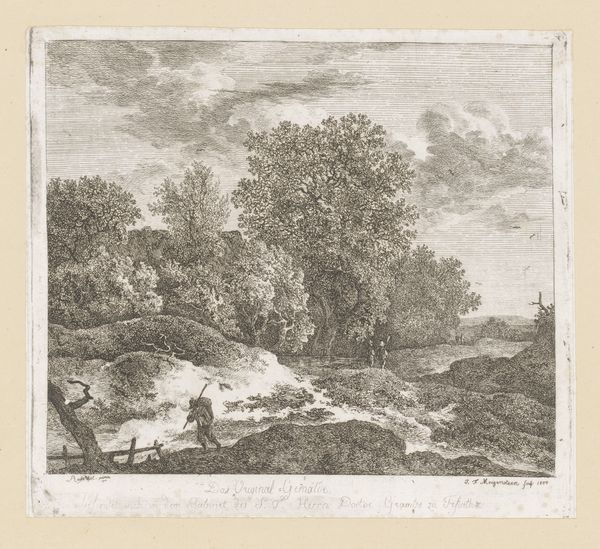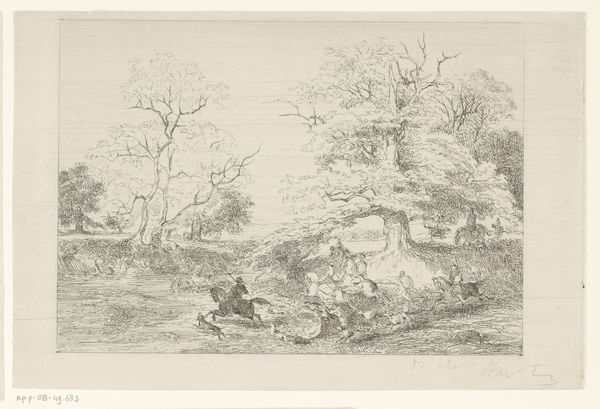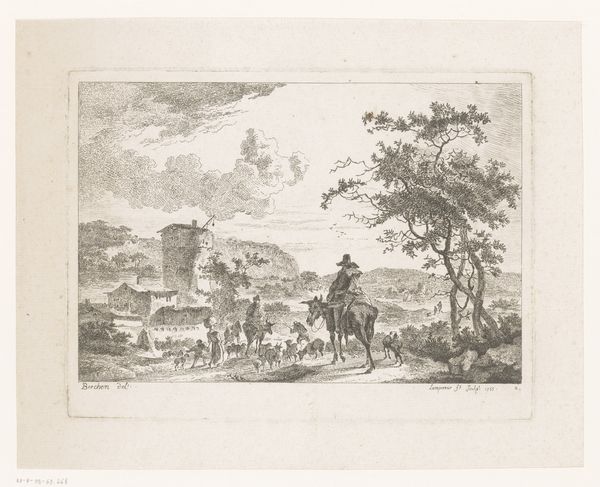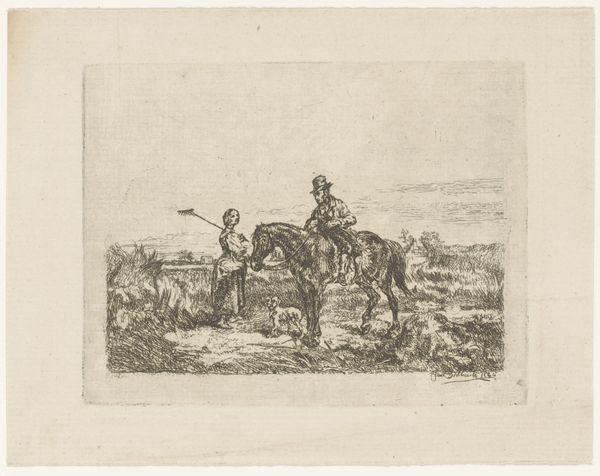
print, etching
#
neoclacissism
# print
#
etching
#
landscape
#
figuration
#
academic-art
Dimensions: height 229 mm, width 258 mm
Copyright: Rijks Museum: Open Domain
Curator: This print is titled, "Landschap met spinster en vee," which translates to "Landscape with Spinner and Livestock," created sometime between 1795 and 1873 by Ignatius Josephus Van Regemorter. The print uses the etching technique. What's your first impression? Editor: A muted scene—very pastoral, almost idyllic in its quiet composition. There’s a soft diffusion of light and it has this gentle texture because of the etching lines. The tonal range is minimal creating a dreamlike effect. Curator: It's fascinating how seemingly simple depictions of rural life are often deeply entrenched in the social and political landscape. The artist, working during a time of revolution and social upheaval, presents us with a nostalgic, almost idealized view of labor and rurality. This could be seen as a yearning for simpler times. What are your thoughts? Editor: From a formal standpoint, the balance is really quite masterful, even if subdued. Notice how the figure of the spinner and the cow mirror each other in the foreground, establishing a sense of order. The receding landscape, with its atmospheric perspective, provides a classical compositional structure. Curator: Exactly. And yet, who is this woman spinning wool? She embodies labor and is often romanticized as symbols of virtuous domesticity. Think about the historical realities of labor, of gender roles, of who gets represented in these serene landscapes versus the actual lived experiences of working-class women. Editor: Agreed. And it’s impossible not to view it without thinking of the medium. The precise etching emphasizes linear quality, drawing your eye through the landscape step by step and creating a visual hierarchy. The controlled technique and careful layering creates a really appealing sense of depth. Curator: Considering the history of etching itself—its relative accessibility compared to painting, how does it allow for a democratized vision of art? Editor: It creates access in a lot of different forms—multiple images, multiple views of the natural order as determined by an etcher, giving viewers more options of engaging. The use of line gives an intellectual distance, a framework, an order from which we still find the harmony with the idyllic landscape appealing. Curator: Ultimately, in this scene, there are so many questions about labor, about gender, and how social conditions impact who gets represented—and in what way. It challenges viewers like us to contemplate art's connection to history. Editor: And as we’ve just noted, seeing it simply as line, shape and tonality makes us also sensitive to its more subtle order which, no matter what is intended, provides a meditative pause for those viewers in need.
Comments
No comments
Be the first to comment and join the conversation on the ultimate creative platform.
